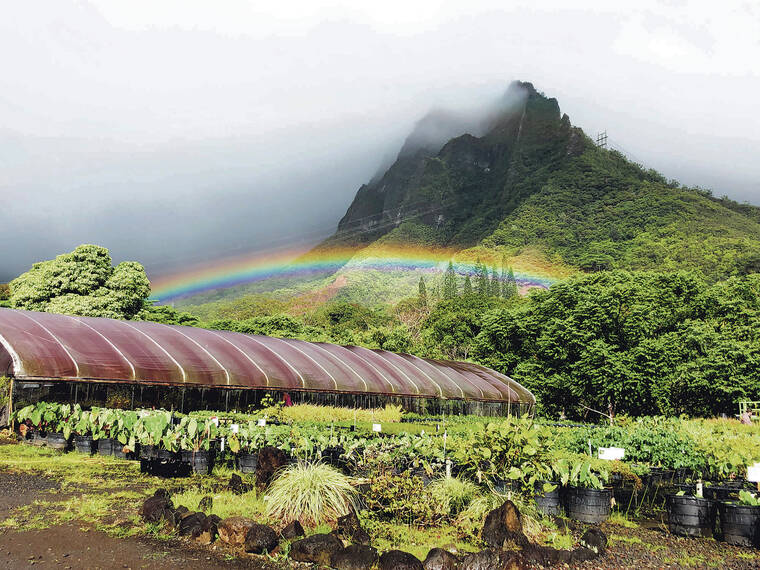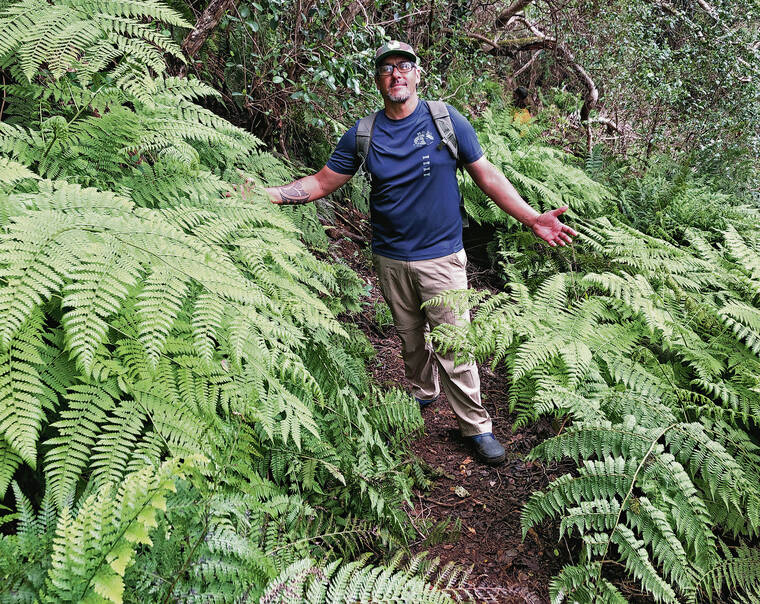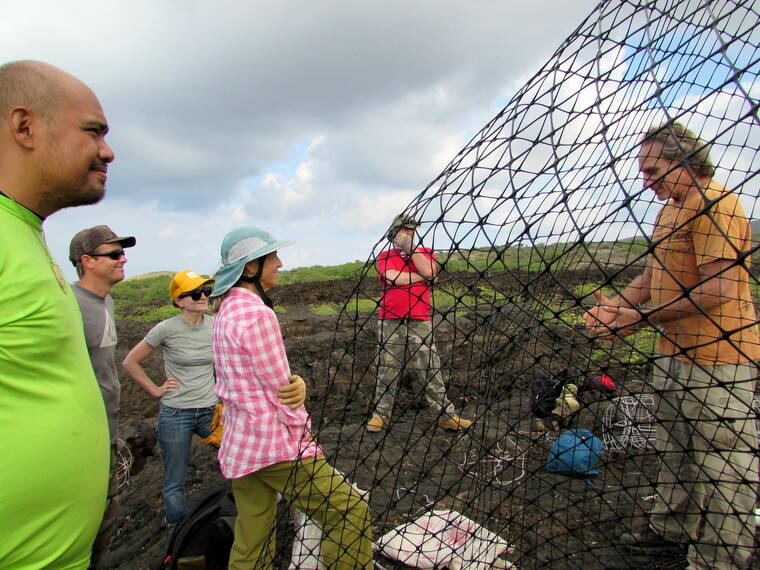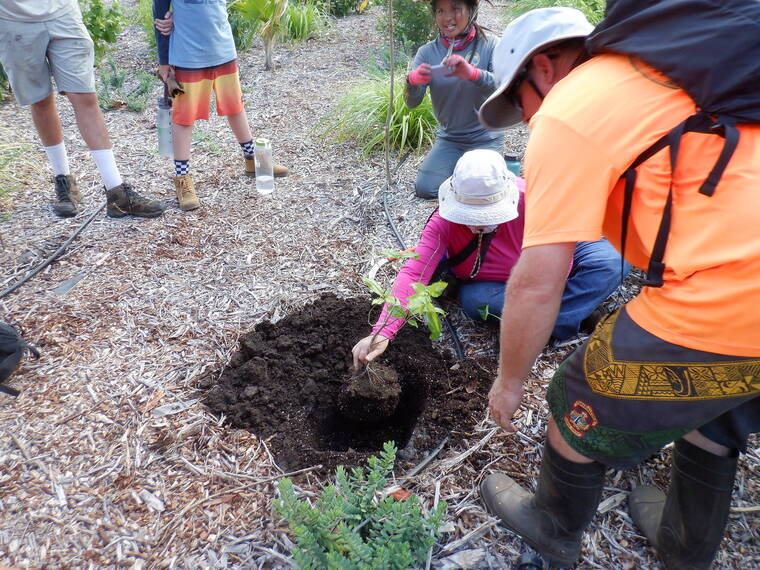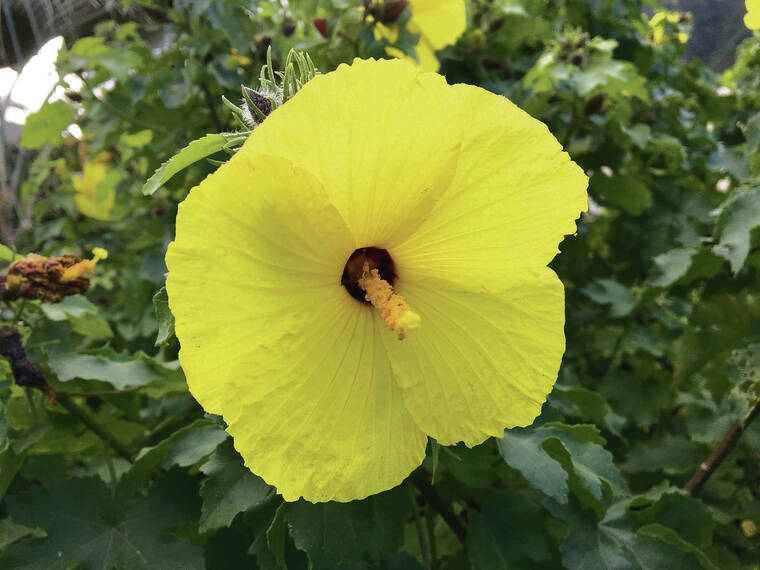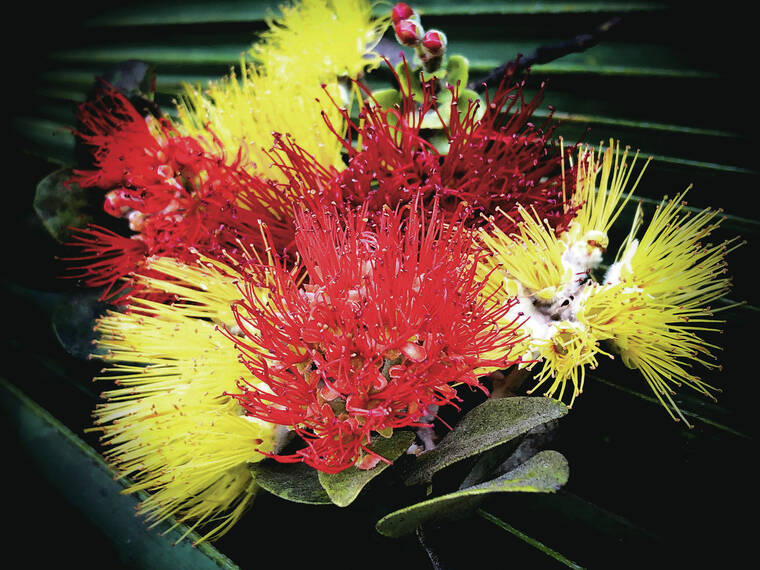When Rick Barboza was studying zoology at the University of Hawaii, he took an ornithology class as an elective. There, he said he learned about all of the “super beautiful and extremely rare” Hawaiian birds, as well as the native plants that helped them flourish many years ago. He decided then that he wanted to learn more.
So, he and a friend, who was a Hawaiian Studies major at UH, spent their free time hiking to remote areas and waiting in long lines at sales to find these endemic species. Soon, it became a passion project for the duo, who started growing whatever native plants they could find in their yards and then swapping them to grow their collections.
Barboza and his friend, Matthew Schirman, eventually founded Hui Ku Maoli Ola, a native plant nursery in Kaneohe, with the jump-start of a huge contract to provide Home Depot with Hawaiian plants. More than 20 years later, Barboza and Schirman are still going strong; they even expanded to offer native plant landscaping services and founded an educational nonprofit.
“I’m born and raised in Hawaii and in a Hawaiian family. (But) all of the plants that I grew up with that I thought were Hawaiian weren’t,” he said. “The plants are in this huge decline, and to find out that we’re the extinction capital of the world, it just blew my mind. That kind of got me into this rabbit hole.”
April marks Native Hawaiian Plant Month and national Native Plant Month. Several advocates say it’s a great way to bring awareness about the environmental and cultural importance of our native species, as well as to highlight the work community groups are doing to increase our native plant species in the islands. They also say that every month is worth planting native plants.
According to the state Department of Land and Natural Resources, there are about 1,400 plants native to Hawaii today, and nearly 90% of them are only found in the islands. More than 100 native plants already have gone extinct and another 200 have 50 or fewer remaining in the wild, according to DLNR. Additionally, more than 350 of the native plants are listed as endangered or threatened, and about 50 are proposed as endangered. Although Hawaii’s land mass comprises less than 1% of the United States, the islands are home to 44% of the country’s endangered and threatened plant species.
“We’re in the midst of a heartbreaking wildlife extinction crisis, losing about one species every hour, and Hawaii is at the leading edge. Our community needs to stand up for our native plants and ensure that they get proper protection and funding,” said Maxx Phillips, Hawaii director of the Center for Biological Diversity, in an email. “Plants, in general, are the foundations of ecosystems. Native plants are special for these reasons, but so much more. Our native plants are absolutely foundational to Native Hawaiian culture.”
Phillips pointed to examples such as mehamehame, an endangered tree that was used for carving long- distance voyaging canoes. The ohia lehua is also used by many hula halau and practitioners to weave lei poo, kupee and lei (adornments for the head, wrists, ankles and neck). And many native plants are also used for la‘au lapa‘au, traditional healing practices, she said.
Barboza added that many native species laid the foundation for cultural practices and traditions. He said many places in the islands were also named after native plants, some of which can no longer be found in those areas anymore.
“I really think that culture evolves from the natural surroundings,” he said. “Every time that we have a plant or an animal go extinct, that part of what made us Hawaiian also goes extinct. We don’t want to lose that authenticity of what took thousands of years to establish.”
Phillips said the Center for Biological Diversity has filed multiple lawsuits to safeguard native plants. The nonprofit also advocates for rare endemic plants to be placed on the Endangered Species list, works to create and protect critical habitat and lobbies government officials for more adequate funding.
Diane Harding, president of the Lani-Kailua Outdoor Circle, said that although they started as a tree- planting group, the organization recognized the importance of our native plants. Because of that, Harding said members have landscaped, planted and maintained many native trees and plants in Kailua, including naupaka, an endemic shrub that blooms flowers, at Alala Point and Kalama Beach Park, and loulu, Hawaii’s only native palm, in the median of Kailua Road.
She said they also run a program at the Women’s Community Correctional Center that focuses on growing native and other plants.
Irene Newhouse, secretary and longtime member of the Maui-based Native Hawaiian Plant Society, said their group of volunteers also tries to do what they can to educate the community and to grow more native plants.
Newhouse said their members go on several service trips a year in the islands to assist with growing native plants. They have developed partnerships with private landowners, where they install fencing and remove invasive species. And they try to be a community resource by participating in the Maui Nui Botanical Garden’s Arbor Day and the flower festival in Haiku.
Growing up on a 100-acre farm in upstate New York, Newhouse said being in nature has always been her passion. When she moved to Hawaii in 1998, that passion grew. Now she grows native plants such as kupukupu, ukiuki and hala in her backyard and often swaps plants with other members so she can increase her collection. Although it can be a challenge to grow some native plants, she said it’s worth it.
“There were no other kids for miles around, so we would take all of the nature guides … and go exploring in the pastures and just try to identify everything we saw that caught our eye,” she said. “Wherever I’ve lived, that’s what I was interested in.”
For Barboza, expanding Hui Ku Maoli Ola to a second location in Waimanalo has showed him that many people care about our native plants. They also founded a nonprofit, Papahana Kuaola, in 2006 that provides aina-based education.
He said they also took their knowledge of native plants and applied it to landscaping work, often meeting with private landowners to restore, grow and maintain native species. Last year, Barboza said they completed a major landscaping contract at Turtle Bay Resort, where they worked to flip the original design, which included just 30% native flora, up to 70%.
Barboza said the public can help with these efforts by learning about their environment and the value of our endemic species.
“It’s been a struggle, but it’s also been very satisfying, and we feel like we did have some impact in making things better,” he said. “We’ve done a lot, but it’s so minuscule compared to what more needs to be done. We’ll probably never stop doing what we’re doing.”
———
Jayna Omaye covers ethnic and cultural affairs and is a corps member of Report for America, a national service organization that places journalists in local newsrooms to report on undercovered issues and communities.
